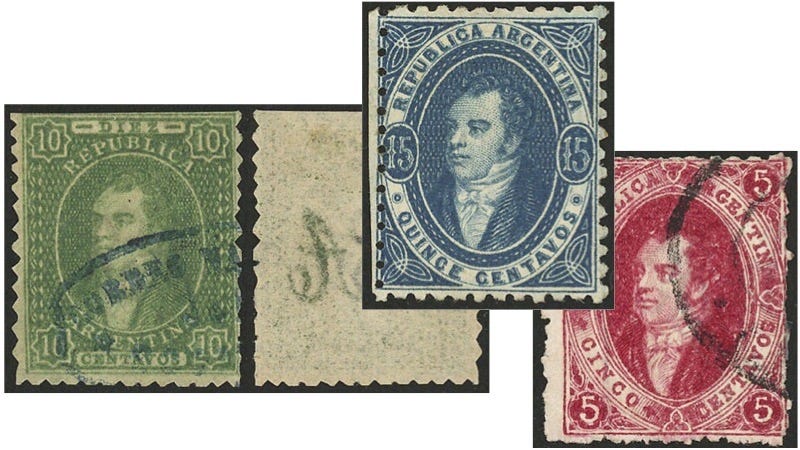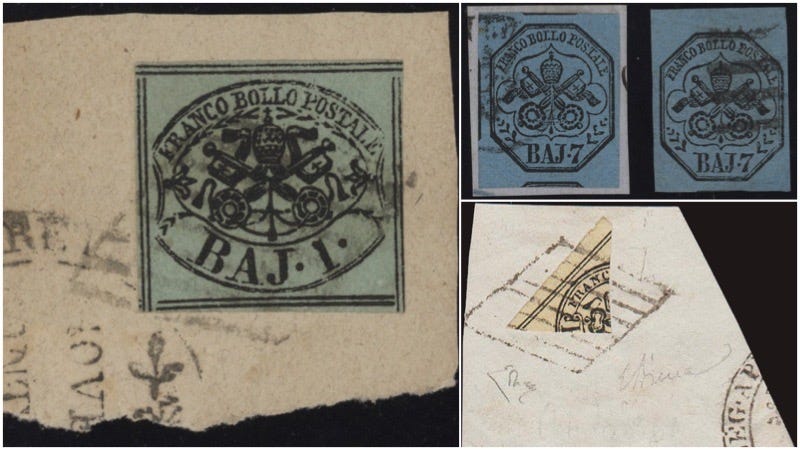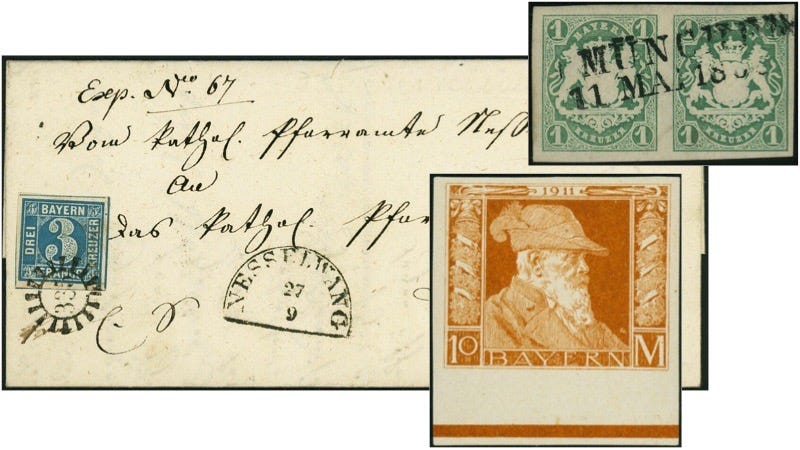When hunting, know where to go.
If you’re looking for quality, selection and reasonable prices, turn to the source
I’m always amazed at the garbage.
My first love in philately is the classics, particularly Great Britain, and I like to spend hours browsing online stamp auctions (could ya tell?). If I’ve learned one thing over the years, it’s this: where you hunt matters.
Fly fishermen know it, mushroom foragers know it, hunters know it. So why are so many stamp collectors still searching in all the wrong places? Partly it’s a matter of old habits dying hard, partly it’s the fact that even in a world drastically shrunk by the internet, language barriers and concerns about cross-border shopping persist.
The best hunting for stamps, not surprisingly, remains with dealers and auction firms in your chosen area’s country of origin. Historically, most stamps were used domestically, and even the ones that were primarily posted to overseas destinations (e.g. the higher face values) eventually found their way back to the place where the collector market for them was strongest.
When I browse stamps, whether the sellers are European, North American, South American, Australian, Middle Eastern, Asian or African, the quality of “foreign” material—foreign to each of those places respectively—can range from average to downright embarrassing. Garbage is a strong word, but alas, that’s what they typically have. And it amazes me what some sellers try to charge for it.
Yet whenever I look at those countries’ own philatelic offerings, I find gorgeous stuff priced quite affordably. In other words, the richest source of classic German States material is not in America or anywhere else—it’s in Germany. The best Swedish stamps, in Sweden; Argentine in Argentina and so forth. Whenever I muster the courage to wade into the listings of a small, local auction house in a foreign country, be it Italy or Belgium or Lebanon, I’m amazed by the breadth, quality and reasonable prices for each country’s own material. It is the opposite of garbage.
The moral of the story: go wherever your trout/boletus/elk are. Let’s look at three examples among current auctions. While the prices I cite are just the opening bids at time of writing, and I would fully expect them to close higher, they give an idea of the quality available and potential for good buys when you go local.

Guillermo Jalil is one of Argentina’s leading philatelists. Besides having co-written the definitive modern reference on his country’s stamps and postal stationery, Jalil’s firm, Philatino, holds regular auctions of better material. The upcoming Aug. 18 sale is a case in point: it consists solely of stamps from Argentina’s popular and well-studied second issue, known as the Rivadavias. Depicting Bernardino Rivadavia (1780-1845), the nation’s first president, these stamps were current from 1864-72. They were elegantly designed but their printing and perforating was somewhat on the primitive side, resulting in a lot of the kinds of varieties that can keep a diehard philatelist engaged for a lifetime.
If you were to only frequent dealers in the United States or Europe, unsurprisingly, you would find a limited selection of Rivadavias that are less than first-rate, and that’s putting it politely. Jalil’s sale, on the other hand, offers 101 examples of what he bills as “cheap Rivadavias,” representing many elusive varieties and hard-to-find postmarks. Don’t be dissuaded by the adjective “cheap”: though they range in price from under $10 to over $100 apiece—well within the budget of almost any collector—the quality is good to excellent for these issues. If you’ve never given much thought to Argentina as a collecting area but are intrigued to test the waters, this sale would be an excellent opportunity to do just that.
And there’s no need to be nervous about venturing abroad: the sale is listed at StampAuctionNetwork, the currency is U.S. dollars, and all descriptions are in English. Jalil has been in business over 40 years, is a member of the American Philatelic Society and many other groups, and has helped build some of the greatest South American collections.

The second example is a sale I mentioned a couple of weeks ago, by Philatelia Fischer in Rome on Sept. 1-2. Obviously, it is strong in Italian-area material, especially the individual states that issued their own stamps prior to Unification in 1861: Parma, Modena, Naples and the rest.
I zoomed in on three items from the Papal States, which refused to be annexed by Italy until 1870. This can be a tricky area to collect, as subtle gradations in quality can have a big effect on price—and many of the stamps were later reprinted for collectors.
The entire country comprises just two sets, totaling 18 stamps, although variations in paper color and some flyspeck differences in design boost that count extensively. Interestingly, the two sets are in different currencies: the first in the old Roman scudo of 100 baiocchi, the second in modern Italian lira of 100 centesimi, adopted in 1867.
The Roman postal system tolerated the cutting up of stamps to make smaller denominations, and some of the resulting bisects, trisects and even quadrisects have their own catalog listings and can be very elusive and valuable.
While the Fischer sale contains plenty of better stamps and on-cover usages opening at three and four figures, there are also numerous attractive stamps priced under €100. With the euro now roughly at parity with the U.S. dollar, this is a great time for American collectors to buy stamps in Europe.
Lot 142 is a 1 baiocco with full margin rules, on a small fragment of an envelope. As these stamps had no perforations and had to be divided by scissors or penknife, margins are usually sliced off on one or more sides and full-margined examples are scarce. Though this relatively common stamp is valued by Scott at just $9 in very fine, used condition, for this kind of superb “condition rarity,” the opening bid of €30 seems like a good buy. For the same reason, the two examples of the 7b in lot 185, currently opening at €40, seem very attractive.
Lot 172 doesn’t look impressive at first glance, but it’s an important rarity at a very affordable price. Hard to tell, but it’s actually a piece of a 4b stamp that was cut into quarters to pay the 1b rate. Tied to a small piece of a letter, it’s certified genuine by two of the most respected Italian dealers of the past, Emilio and Enzo Diena. Considering Scott values this usage at $20,000 (albeit on a full cover), the opening bid of €440 seems worthwhile for a collector seeking completion.
The Fischer sale is listed on SAN, where bidding will close early (EDT) on each day of the sale. Live bidding will be available on Fischer’s own site, which is in English as well as Italian. Though the descriptions are in Italian, if you collect Italy you can probably understand most of it, even if you don’t speak the language fluently.

The final example is a sale that closes tomorrow, Aug. 4: Hettinger Auktionen in Dessau, Germany. This sale is not listed at SAN but can be found on Philasearch, a stamp-auction aggregator based in Germany. Hettinger is one of many small, local auction houses that any collector should be frequenting if they are interested in any aspect of Germany, be it classics, wartime issues, or modern material.
As I browsed through their listings—yes, lot descriptions are in German, but here again, if you collect this area, you probably have enough familiarity with the language to fathom the terminology—I was struck by the combination of high quality and very modest opening bids. I picked out three classic items from the state of Bavaria (shown above) that struck me as particularly beautiful and all priced in the €25-40 range. Again, the weak euro makes this an attractive time to buy.
So, if you like old German stamps, forget sifting through second-rate material: go to the source. Same goes for Argentina, Italy and just about any other country you can collect (except perhaps Afghanistan; I wouldn’t go there now).
Til tomorrow, happy hunting!


However, this does not apply, in my view, to paper money rarities where an international marketplace is established with oittle variation 8n prices.